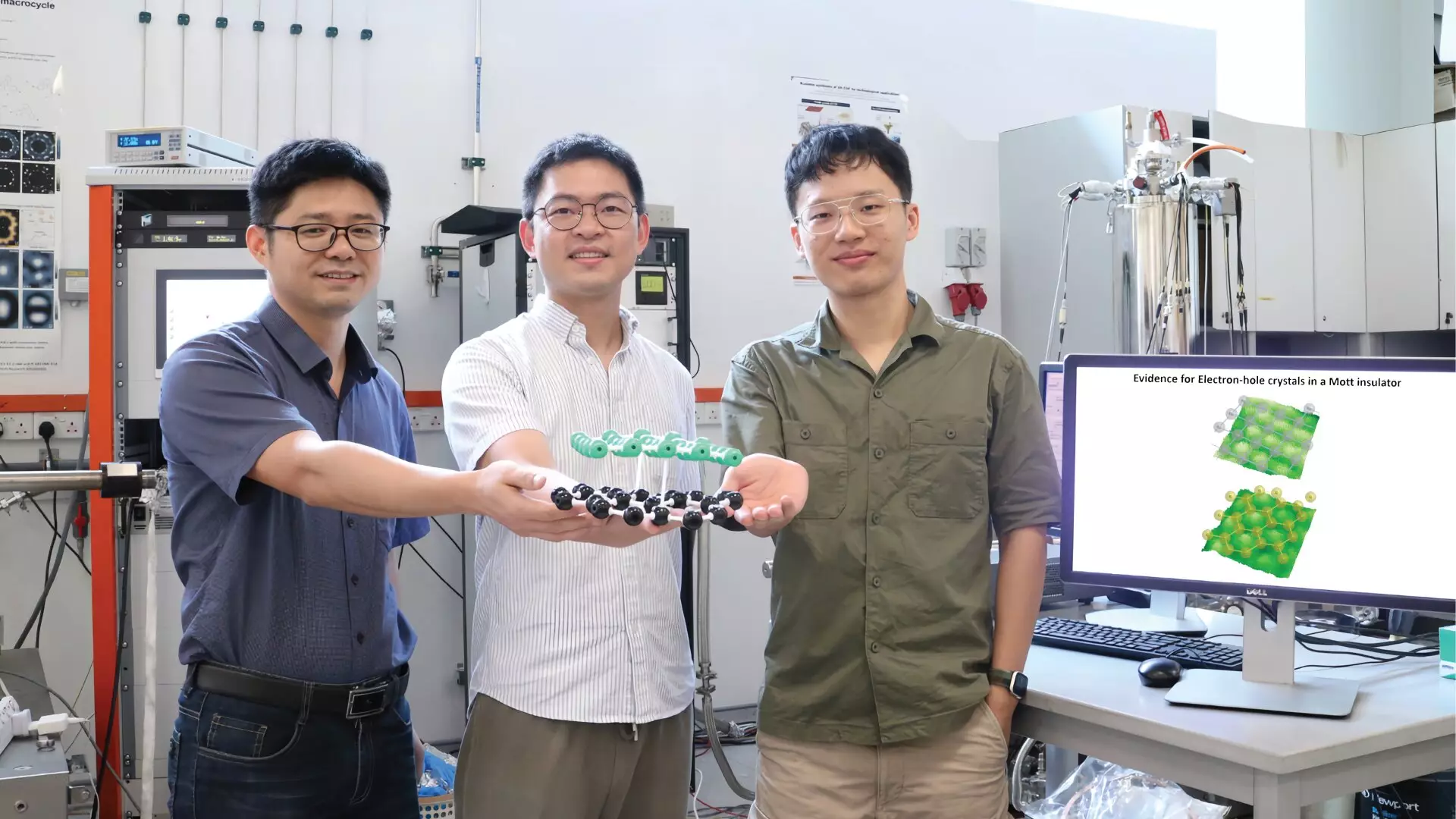In the captivating realm of quantum physics, the arrangement of electrons within a material can lead to extraordinary phenomena. When the number of electrons aligns precisely with the available lattice sites, a unique interaction arises, fostering the emergence of what scientists term an electron crystal. This ordered configuration is more than a mere whim of nature; it represents a collective behavior that could unlock the potential for advanced quantum simulations. The implications of these electron interactions extend far beyond theoretical frameworks, offering tangible benefits for future technologies.
When both electrons and their positively charged counterparts—referred to as holes—exist within a singular framework, they produce exotic states of matter that defy common understanding. The fascinating counterflow superfluidity phenomenon arises under such circumstances, where electrons and holes navigate in opposite directions, free from the burdens of resistance and energy loss. Yet, this intriguing concept is plagued with challenges, chiefly the swift recombination of these particles, which undermines stability and practicality in real-world applications.
Challenges of Coexistence
Historically, maintaining the coexistence of electron and hole crystals in a unified system has proven to be a monumental task. Scientists have sought refuge in layered structures to segregate these entities, successfully achieving electron-hole states in multi-layered materials. However, the quest remains ongoing to demonstrate such states within a single natural material—an endeavor still fraught with difficulties.
The reasons for this scarcity are multifaceted: the delicate balance required to keep the electron-hole pairs intact without their mutual cancellation is not easily struck, and until recently, empirical evidence lacked the robustness to substantiate the existence of these states in a standalone medium. This urgent need for substantial experimental validation pushed researchers to seek new methods and materials that could sustain these fascinating interactions without disruption.
A Pioneering Breakthrough in Mott Insulators
A remarkable development has emerged from the National University of Singapore (NUS), where a research team helmed by Associate Professor Lu Jiong has succeeded in visualizing electron-hole crystals within the formidable confines of a Mott insulator—specifically, Alpha-ruthenium(III) chloride (α-RuCl3). This achievement not only marks a pivotal moment in quantum materials research but also signals uncharted opportunities for exploring quantum excitonic states that arise from the coexistence of electrons and holes.
The implications of this discovery are profound. With the observed electron-hole crystals, we stand on the precipice of potential innovations in computing technologies, particularly in memory-based computing and quantum computing. The study, published in *Nature Materials*, is a testament to the dedication of this research group and exemplifies the manner in which interdisciplinary approaches can yield groundbreaking results.
The Role of Scanning Tunneling Microscopy
At the heart of this discovery is the innovative application of scanning tunneling microscopy (STM), which operates by using quantum tunneling to furnish real-space images at the atomic scale. Traditionally, STM’s utility has been limited regarding insulators; however, the ingenious combination of graphene and the Mott insulator α-RuCl3 has revolutionized the methodology. Graphene, a marvel of modern materials science, operates as a one-atom-thick conductive layer, effectively allowing electrons to traverse its surface and illuminate the hidden electronic architecture of the Mott insulator beneath.
Furthermore, the integration of graphene serves as an adjustable electron source, permitting a non-invasive and tunable method of doping α-RuCl3. This configuration has led researchers to visualize two distinct ordered patterns at different energy levels, corresponding to the lower and upper Hubbard bands of the Mott insulator. The ability to manipulate carrier densities through electrostatic gating facilitates the direct observation of transitions in these orderings, providing vital insights into the crystalline nature of electrons and holes alike.
Exciting Future Directions
The implications of visualizing electron-hole crystals go beyond mere observation. As Associate Professor LuJiong highlighted, the pioneering work carried out in this research illuminates new pathways for leveraging electrical signals to control these formations. The prospect of utilizing doped Mott insulators to generate materials capable of rapid state transitions presents promising applications in the field of computational technology.
Moreover, this research opens the floodgates for conceptualizing new materials designed for use in quantum simulations, fundamentally altering our approach to understanding quantum physics. By establishing a clearer understanding of electron-hole dynamics and their intricate arrangements, we can aspire to develop sophisticated tools that enhance our capabilities in fields ranging from computing to materials science. The journey into this exciting frontier is just beginning, and the potential that lies ahead is both thrilling and filled with promise.

